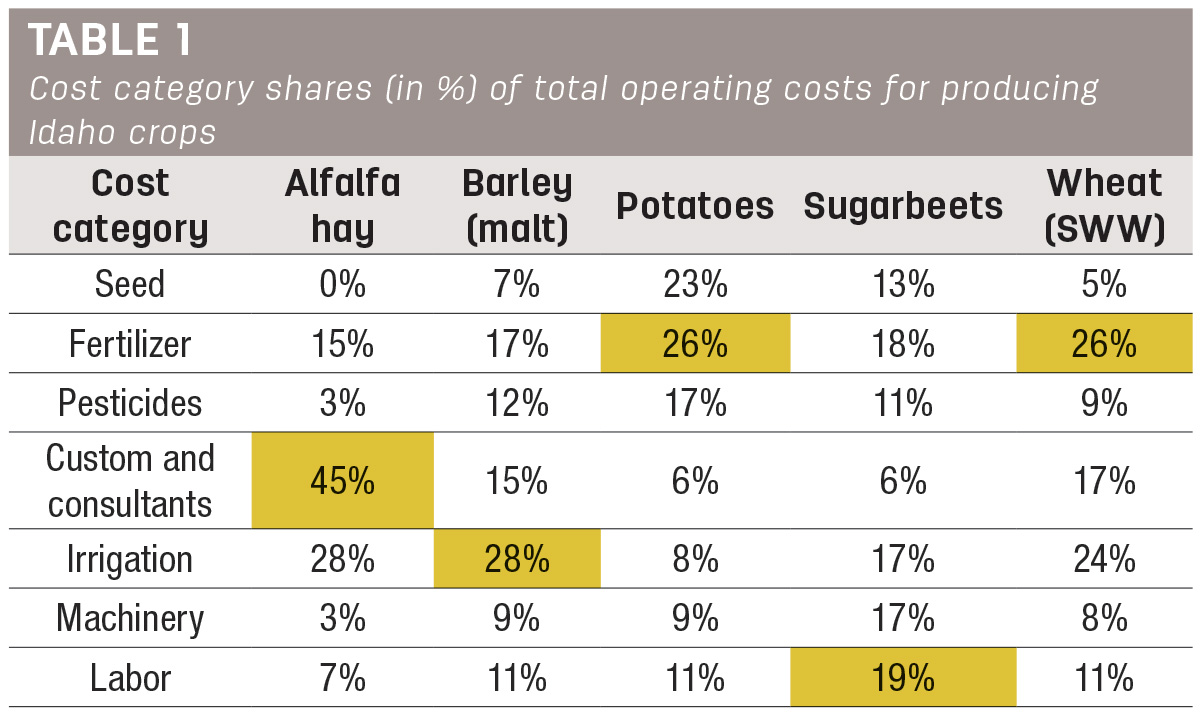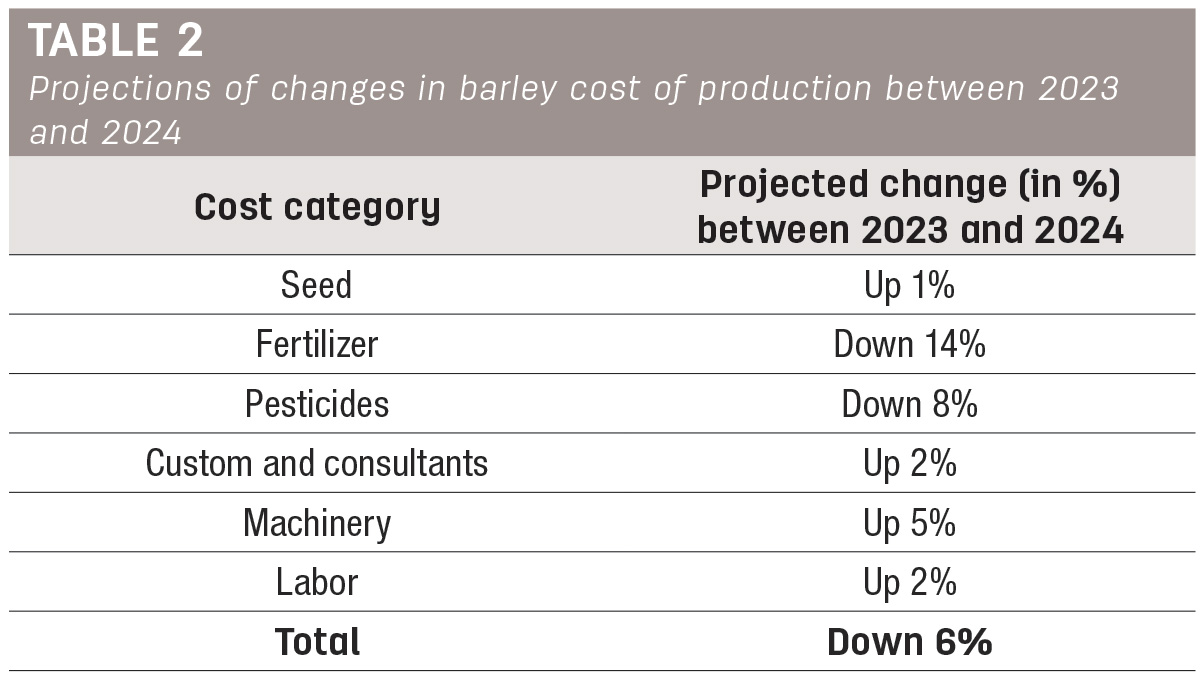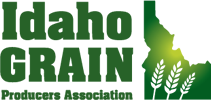This post was originally published on this site
Article Source: Analyzing Idaho crop input costs and 2024 projections - Ag Proud
As the crop-planting season approaches for most regions in Idaho, understanding what operating costs will look like in 2024 is crucial for farm businesses. This article provides a background discussion on categories of operating costs of the greatest importance for crops grown in Idaho and an assessment of the 2024 operating cost projections from the USDA Economic Research Service (ERS). The first part provides insights regarding the input prices that can have the greatest influence on a farm business’ profitability.
Before beginning, it is important to note that most Idaho crop producers have rotations spanning four to six years, meaning crops aren’t planted consecutively in the same field each year. Thus, the mix of inputs purchased for planting each year varies along with their rotation.
Differences in operating costs across crops
To investigate which types of input costs are most important for crops grown in Idaho, operating cost estimates for south-central Idaho were obtained from the University of Idaho AgBiz Crop Budgets from 2001 to 2019. The crops selected for analysis were alfalfa hay, barley (malt), potatoes, sugarbeets and wheat (SWW). Seven operating cost categories were considered for each crop, including seed, fertilizer, pesticides, custom operations and consultants, irrigation, machinery and labor.
For each year in which there were cost estimates, the cost for each category was divided by the total operating costs. Multiplying the value of an individual component cost (e.g., fertilizer) divided by the total operating cost by 100 provides an estimate, in a percentage, of the share of total operating costs that are accounted for by each category. Lastly, these percentage values for each category and year were averaged to obtain an average percentage of total operating costs for each category over the observation period.
The estimates from this cost decomposition analysis are shown in Table 1, with the top cost categories highlighted. The highest operating cost category for alfalfa hay is custom operations and consultants (45%), which includes activities such as mowing, raking, baling and stacking. For barley, the category that accounted for the highest total operating costs was irrigation, which accounted for 28%, and the top category for wheat was fertilizer (26%). For potatoes, which also have the highest total operating costs, the top operating cost category was fertilizer (26%), with seed ranking second at 23%. The operating cost categories for sugarbeets were relatively more evenly distributed, with labor comprising the slightly highest cost category at 19%.

The main message from this analysis is that price increases (or decreases) for some cost categories, such as fertilizer prices for potatoes, are relatively more important for producer profitability than changes in other categories.
Crop input price projections for 2024
Given this context of differences regarding the relative importance of price changes for the profitability of producing a given crop, we next provide projections regarding the changes in several categories of production costs for barley for the U.S. from 2023 to 2024 from the USDA ERS. While the USDA ERS also produces cost of production estimates for wheat (but not the other crops previously assessed), the projected changes are similar for barley and wheat, so we will only discuss barley here. Also, although no estimates are provided for the other assessed crops, for the other cost categories, except seed, the overall direction of cost change (up or down) will likely be similar to barley, though the magnitudes would vary across crops.
The projections in Table 2 show that seed, custom and consultants, machinery, and labor costs are expected to increase between 1% and 5% in 2024 relative to 2023, while those for pesticides and fertilizer are expected to decline by 8% and 14%, respectively. Overall, total operating costs for barley in 2024 relative to 2023 are projected at 6% lower.

Since fertilizer prices were determined as particularly important for the total operating costs when producing potatoes and wheat (Table 1), the projected lower fertilizer costs will provide some welcome relief for producers of those crops. Lower pesticide costs will also benefit potato producers. However, with many other production cost categories projected to increase slightly, the cost reduction opportunities for fertilizer and pesticides may likely be offset by increases in other categories.
So far, we presented historical average estimates and projections for 2024. As crop producers know, many things change over time, and there can be substantial variability in individual input prices over the year. Thus, we close by providing strategies that producers can consider implementing to reduce their risk of incurring substantially higher-than expected input costs.
- For the relatively higher cost categories, such as fertilizer, it is worth considering whether making purchases multiple times during the year could be accommodated while considering cash flow capacity.
- Negotiating crop prices as fertilizers, as well as other inputs such as chemicals, are purchased, may also help ensure that profitability is maintained in historically high-input price periods.



